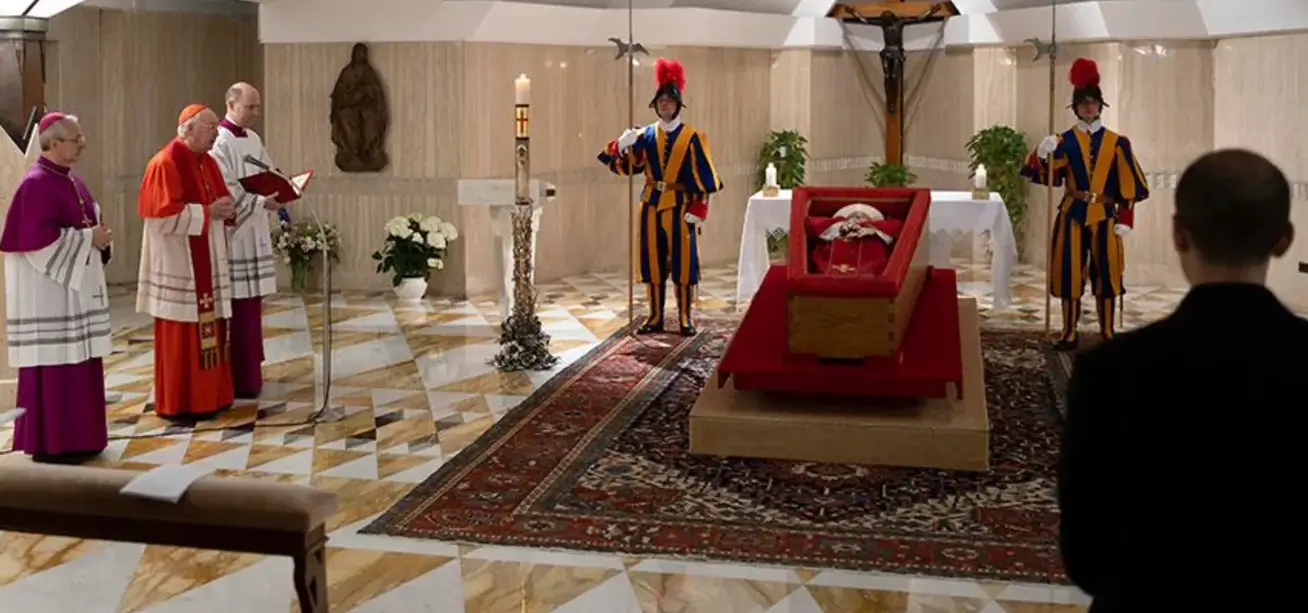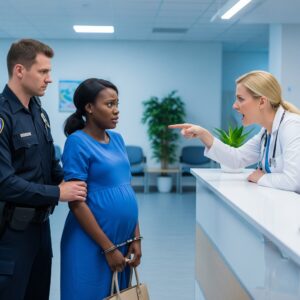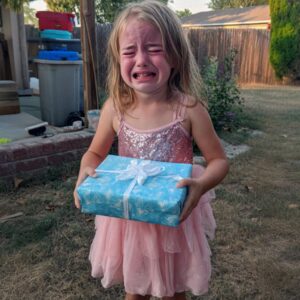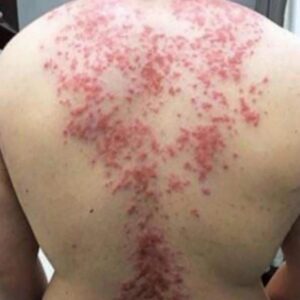Less Than 24 Hours Later, Vatican Clarifies: Pope Francis Succumbed to Stroke, Not Pneumonia
In the immediate aftermath of the sudden passing of Pope Francis on the morning of April 21, 2025, the Catholic world found itself awash in grief, confusion, and an urgent demand for facts. Just hours after news of his death reverberated across the globe, the Holy See released its official medical report: the 88‑year‑old pontiff had not died of pneumonia, as many had assumed following his recent hospitalization, but rather from a massive cerebral stroke that precipitated a coma and ultimately led to “irreversible cardiocirculatory collapse.” Below is a comprehensive, professional account suitable for web publication, detailing the confirmed cause of death, the poignant scenes in St. Peter’s Square, the late Pope’s recent health struggles, his last public moments, and the initial steps the Vatican is taking as it navigates its deepest mourning in decades.
Official Cause of Death: Stroke, Coma, and Cardiovascular Collapse
According to the Vatican’s press office, Pope Francis experienced a sudden cerebrovascular event—commonly known as a stroke—on the morning of April 21. Medical teams responded swiftly to his residence in the Casa Santa Marta, where he had been convalescing since his discharge from Rome’s Gemelli Hospital on March 23. Despite intensive efforts, the pontiff lapsed into a coma and developed what physicians described as “irreversible cardiocirculatory collapse,” a term indicating that his heart and circulatory system could no longer maintain adequate blood flow to sustain life. At precisely 7:35 a.m. local time, the Holy Father passed away, surrounded by his closest aides and medical staff.
Earlier reporting had centered on his nearly six‑week hospitalization for severe bilateral pneumonia and respiratory distress. However, the new official communiqué made clear that those respiratory issues—though grave—were not the immediate cause of death. Instead, a sudden cerebral stroke triggered the fatal cascade. In medical parlance, an ischemic or hemorrhagic stroke of sufficient magnitude interrupts blood supply to critical brain regions, causing rapid neurological deterioration. Though the Vatican did not specify whether the stroke was ischemic (caused by a clot) or hemorrhagic (caused by bleeding), it emphasized that the event was acute and left no possibility of meaningful recovery.
St. Peter’s Square: Silent Vigil for a Beloved Pontiff
News of the confirmed cause of death emerged as throngs of mourners had already begun to assemble beneath the now‑empty central balcony of St. Peter’s Basilica—the very spot from which Pope Francis had addressed the faithful only 24 hours earlier. Well before dawn on April 22, hundreds gathered in the vast expanse of the square, holding rosaries and intoning prayers in somber unison. Candles flickered in the morning breeze, and pilgrims wrapped themselves in national flags—among them the blue and white of Argentina, a poignant tribute to Jorge Mario Bergoglio’s homeland.
By mid‑morning, the square brimmed with silent rows of worshippers. Some recited the rosary; others stood in contemplative silence, their eyes fixed on the balcony, now devoid of the white cassock that had become an emblem of hope and openness. “It feels like the world has gone quiet,” remarked one pilgrim, clutching a worn leather rosary. “He stood there just yesterday, blessing us, and now… nothing.” At intervals, the hush was broken by the soft tolling of bells from the basilica’s campanile, each chime evoking centuries of papal tradition and the gravity of the moment.
When word spread of the Vatican’s medical clarification, the assembled faithful absorbed the news with bowed heads. Some whispered the words back and forth—“stroke,” “coma,” “cardiocirculatory collapse”—as if rehearsing an incantation to ward off disbelief. Others simply rose to their feet and applauded spontaneously, an unconventional gesture of gratitude to a man they viewed as their spiritual father.
A History of Health Struggles: From Pneumonia to Convalescence
Pope Francis’s final months had been marked by a series of high‑profile health scares that drew global concern. On February 14, 2025, he was admitted to the Policlinico Agostino Gemelli in Rome with pneumonia affecting both lungs. At that time, Vatican physicians placed him on high‑flow oxygen support during the day and non‑invasive ventilatory assistance at night. Over the ensuing weeks, intermittent fevers and fluctuating blood oxygen levels prompted cautious optimism: medical bulletins described “clinical stability within a complex framework” and noted incremental improvements after ten days in the hospital.
Despite his fragile condition, Francis maintained his customary engagement with spiritual duties. From his hospital room, he participated by video in the Roman Curia’s annual Lenten Spiritual Exercises and even celebrated the twelfth anniversary of his election as pope—March 13—when a small cake adorned with candles was brought by his attending nurses. On March 23, after thirty‑eight days of inpatient care, the Vatican announced his discharge. Doctors prescribed two months of convalescence, cautioning against large public gatherings. Yet on that very day, the Pope returned to Casa Santa Marta and appeared on a balcony to deliver a brief address, his visage both gaunt and radiant, as he greeted well‑wishers below.
Easter Sunday: The Pope’s Final Blessing
Easter Sunday, April 20, arrived as a bittersweet apex of hope. Having delegated the principal liturgical celebration at St. Peter’s Basilica to Cardinal Angelo Comastri, Francis made a surprise appearance on the basilica’s central balcony. Wheelchair‑bound and supported by four aides, he waved and spoke to the faithful assembled in the square. Absent were the transparent oxygen tubes that had accompanied previous outings; in their place shone a decisive sparkle in his eyes and a voice stronger than many had anticipated.
As the crowds erupted in cheers of “Viva il Papa!” and “Bravo!”, he offered a simple Easter greeting: “Dear brothers and sisters, Happy Easter.” Moments later, defying expectations given his respiratory recovery, he ventured onto the open‑air Popemobile and slowly traversed the square, pausing to bless infants and elderly pilgrims alike. This spontaneous tour lasted only minutes, yet it would become the Pope’s final public gesture—a poignant farewell resonating across continents.
Many observers noted how lightly he handled the day’s events, an indication of both his deep devotion to his flock and his own human vulnerability. By evening, accounts from Vatican insiders described him as fatigued but content, perhaps unaware that those moments under springtime skies would be his last outside the confines of his residence.
A Meeting with U.S. Vice President J.D. Vance
Earlier on Easter Sunday, Pope Francis had met briefly with U.S. Vice President J.D. Vance in the private chapel of Casa Santa Marta. Their conversation, lasting scarcely ten minutes, touched on international conflicts, migration policy, and the role of faith in public life—areas where the Pope’s progressive stances had occasionally diverged from the Vice President’s more conservative views. Though cordial, the encounter underscored Francis’s commitment to dialogue even with those whose positions differed sharply from his own.
Video footage captured the two figures exchanging a polite handshake and a brief embrace. Behind closed doors, aides on both sides described an atmosphere of mutual respect, though some speculated on the symbolic weight of the encounter: a leader known for championing migrants and refugees hosting a high‑profile politician aligned with stringent border policies.
In hindsight, the meeting took on an unexpected poignancy—a testament to Francis’s belief in bridging divides, even as his own health waned.
The Moment of Passing and Its Announcement
Shortly before dawn on Monday, April 21, Francis slipped into unconsciousness following the catastrophic stroke. By 7:35 a.m., Vatican sources confirmed, his life had ended. Two hours later, at 9:45 a.m., Cardinal Kevin Farrell emerged onto the terrace of Casa Santa Marta to relay the heartbreaking news. His voice trembled as he spoke:
“His entire life was dedicated to the service of the Lord and of His Church. He taught us to live the values of the Gospel with fidelity, courage, and universal love.”
Following the announcement, Vatican officials sealed both the papal apartment in the Apostolic Palace and the second‑floor suite at Casa Santa Marta where Francis had lived for twelve years. The ritual sealing—executed by the camerlengo and notarized by Vatican legal officers—denoted the official end of one reign and the interregnum before the next conclave.
Preparations for Lying‑in‑State and Funeral Arrangements
In keeping with Francis’s own preferences for simplicity, the pope’s body was placed in a straightforward wooden coffin—eschewing the customary nested cypress, lead, and oak caskets of previous popes. On the evening of April 21, a solemn rite of death certification took place in the small chapel of Casa Santa Marta, attended by close collaborators and the Swiss Guard. Candlelight flickered across triangular ceiling panels that symbolize the Holy Trinity—invoking themes of unity and divinity that had underpinned his ministry.
The following morning, April 23 at 9 a.m., a formal procession would convey the coffin from Casa Santa Marta through the Vatican Gardens and into St. Peter’s Basilica. There, an open casket would be set before the altar, allowing pilgrims to pay their respects over the next forty‑eight hours. On Saturday, April 26, at 10 a.m., Cardinal Angelo Sodano—Dean of the College of Cardinals—would preside over the funeral Mass in St. Peter’s Square.
Dignitaries expected to attend included heads of state from Italy, France, Spain, and Argentina, alongside representatives of the Orthodox and Protestant churches. Security measures in Rome were swiftly heightened to manage anticipated crowds and VIP delegations.
The Outpouring of Grief: Voices from the Crowd and Online
As word of the stroke became public, mourners in St. Peter’s Square paused to absorb the full import of what had happened. “I feel a deep sorrow,” said Brigitte Thalhammer, tears glistening in her eyes as she gazed up at the vacant balcony. “He was very, very important to so many of us.”
Social media platforms exploded with messages of condolence. One user wrote, “Oh my God, he is now resting,” while another posted, “Rest in Peace, as you well deserve .” A third lamented, “And he died the very next day… RIP Pope Francis.” Collectively, these digital tributes formed a virtual vigil, reflecting the pontiff’s global reach beyond the Vatican’s ancient walls.
Meanwhile, footage of Francis’s surprise wheelchair‑bound visits—both to St. Peter’s Square and his own hospital balcony—resurfaced online, prompting fresh commentary on his resilience and humility. Some questioned why he had appeared in casual attire rather than his customary white cassock; others saw those unguarded moments as emblematic of his willingness to be seen in vulnerability.
Legacy in the Making: A Church Poised for Transition
As cardinals prepare for the upcoming conclave, the Church stands at a crossroads between continuity and renewal. Francis leaves behind a legacy of pastoral outreach, environmental advocacy, and institutional reform. His 2015 encyclical on climate change, Laudato Si’, galvanized Catholic engagement on ecological issues. His reforms of Vatican financial oversight and curial structure yielded mixed results but underscored a willingness to confront entrenched challenges.
In his final days, even amid respiratory distress, Francis continued to model a ministry of presence—celebrating Mass on hospital television screens, extending Easter blessings, and engaging in high‑stakes diplomatic encounters. His decision to be buried in a modest wooden coffin aligns with centuries of teaching on the virtue of poverty and the dignity of all human life.
Looking Ahead: The Interregnum and a New Beginning
With the pontificate concluded, the Church enters the sede vacante—the vacant see—during which day‑to‑day governance falls to the College of Cardinals under the camerlengo’s watch. A nine‑day mourning period (novendiales) will precede the secret conclave, in which 115 cardinal electors under the age of 80 will gather to discern the 267th successor to St. Peter.
Speculation abounds as to whether Francis’s vision for a more decentralized, dialogical, and environmentally conscious Church will shape the deliberations of the next pontiff. Will the new pope reaffirm Francis’s priorities, or will a return to more traditional emphases prevail? As cardinals convene, the faithful worldwide will await word from the Sistine Chapel, praying for divine guidance and unity.
Conclusion
Pope Francis’s passing—now officially attributed to a catastrophic stroke rather than his recent bout of pneumonia—marks both an end and a beginning. The immediate confirmation of the medical cause has clarified lingering questions, allowing Catholics and observers to mourn fully and accurately. The poignant scenes in St. Peter’s Square, the poignant surprise of his final public appearances, and the swift preparations for his funeral all underscore the profound impact of his twelve‑year ministry. As the Church turns inward for a period of reflection and selection, the legacy of Jorge Mario Bergoglio—his humility, his advocacy for the marginalized, and his bold engagement with modern challenges—will continue to resonate in parishes, seminaries, and the hearts of the faithful around the globe.






